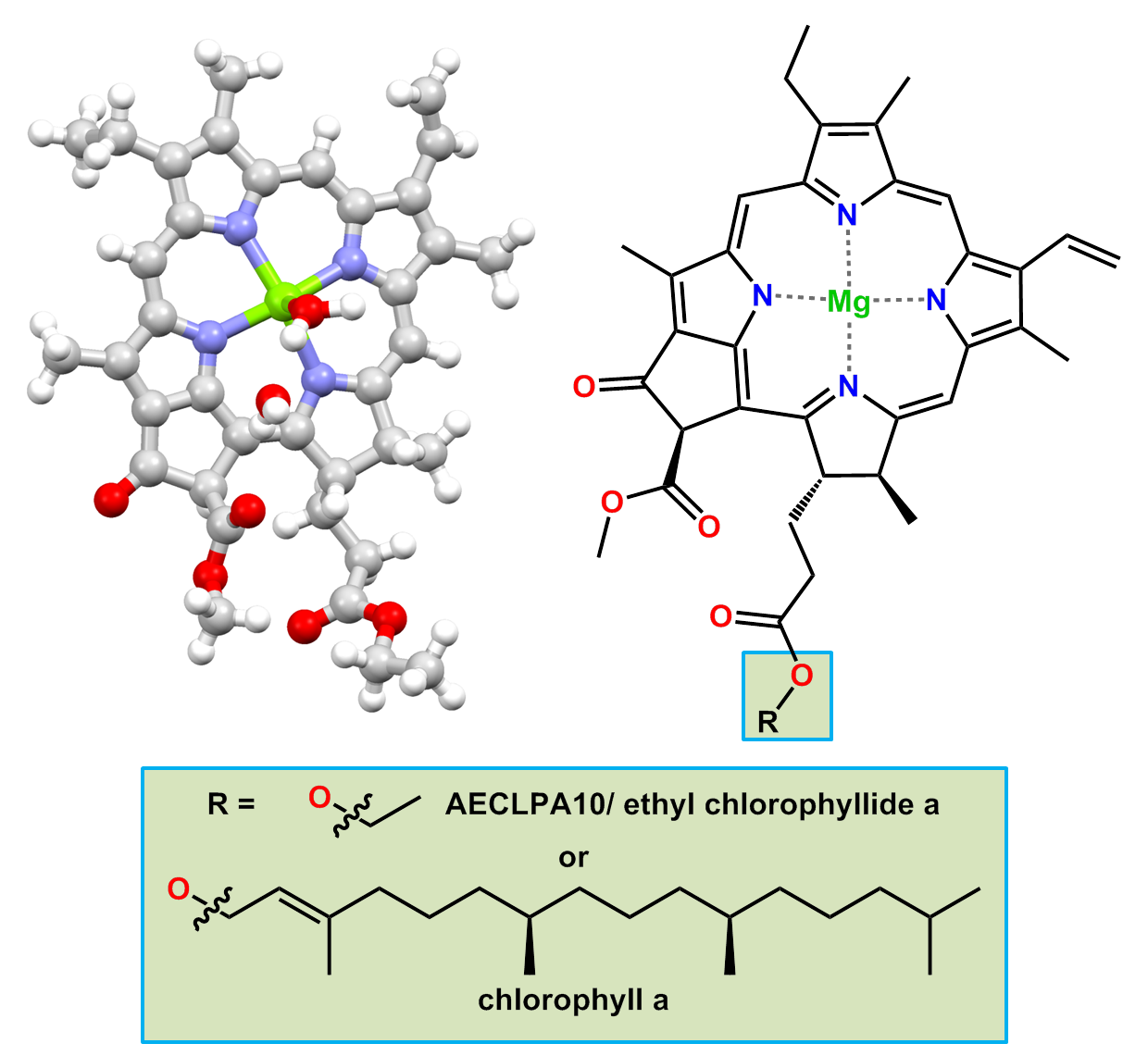Magnesium
Magnesium:

Image of elemental magnesium roll
Facts about Magnesium:
- Magnesium: A shiny grey metal often with a layer of MgO (white) on the surface. Burns with a bright white light
- Fun fact about Magnesium: Magnesium is essential for biological processes and the human body requires 0.3 g of Mg per day.
- Chemical symbol: Mg
- Atomic number: 12
A crystal structure containing Magnesium:

Crystal structure of ethyl chlorophyllide a and comparison with chlorophyll a
Facts about this structure:
- Formula: C37 H40 Mg N4 O6 ? H2 O
- Structure name:Aqua-(ethyl chlorophyllide a) monohydrate, aqua-(methyl 3-(3-ethoxy-3-oxopropyl)-14-ethyl-4,8,13,18-tetramethyl-20-oxo-9-vinyl-24,25-dihydrophorbine-21-carboxylatato)-magnesium monohydrate
- Fun fact about the structure: Chlorophyll has 6 forms all with a long chain ester making them challenging to crystallise leading to waxy or amorphous solids. This led to analogous compounds being crystallised with small esters.
- CSD refcode: AECLPA10 (What’s this?)
- Associated publication: H.-C.Chow, R.Serlin, C.E.Strouse, Journal of the American Chemical Society, 1975, 97, 7230, DOI: 10.1021/ja00858a006
More about Magnesium:
Magnesium is the 9th most abundant element in the universe and 8th in the earth’s crust. Typically elemental magnesium is coated in a layer of MgO protecting it from further corrosion. Magnesium has a range of applications including use in fireworks and flares due to the bright white light produced when Magnesium is burned. Magnesium is also a key component Chlorophyll a collective term for pigments found in plants which are essential for plants performing photosynthesis, in which plants convert sunlight into food. Chlorophyll is responsible for the green colouration of plants and is also used as an additive in foods to give food a green colour.
Learn More About the International Year of the Periodic Table (IYPT) in Crystals Project:
This project (#IYPTCrystals) is part of the International Year of the Periodic Table celebration (#IYPT2019), read more about the project here.
You can follow us on social media; search for #IYPTCrystals or follow The CCDC on X @ccdc_cambridge on Facebook ccdc.cambridge, on Instagram ccdc_cambridge or on YouTube CCDCCambridge.
Understand some of the terms and concepts used with our Frequently Asked Questions page here.
A 3D visualization showing Magnesium in real crystal structures: